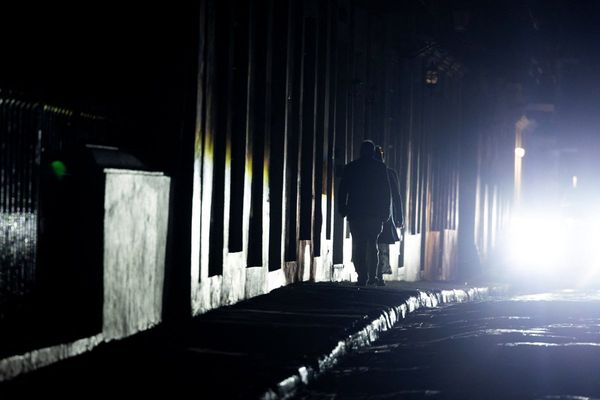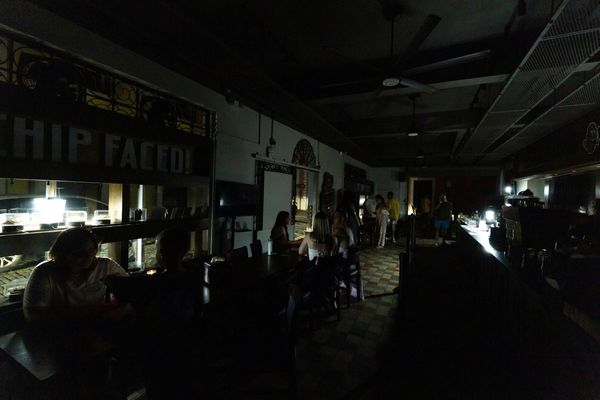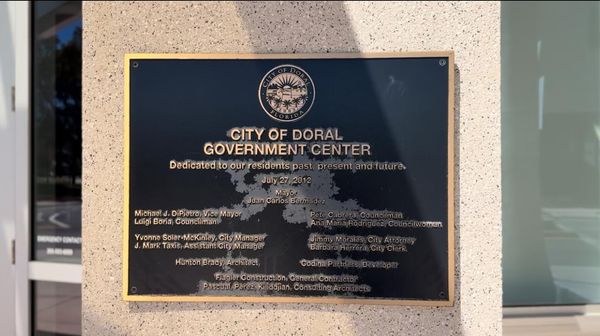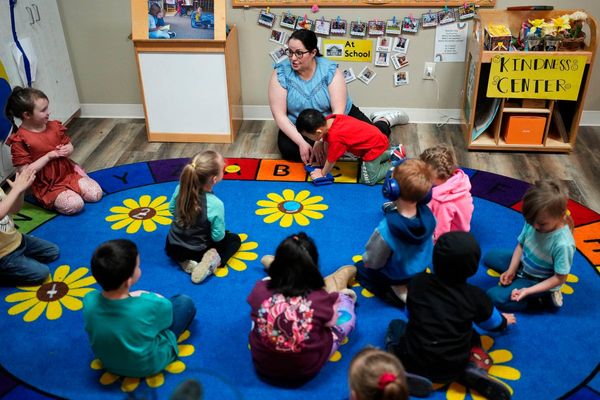
Shirley Purdie was born at Violet Valley on the Mabel Downs cattle station, or Gilbun in her language. It’s in the eastern Kimberley in Western Australia, a dusty 30-minute drive from the community of Warmun, once known as Turkey Creek. It’s 3,000km from Perth.
Purdie, a renowned artist from the Kimberley, has gone home to Violet Valley to sit out the coronavirus with other Gija people. We speak on the day she leaves, standing in front of her Toyota 4WD in Warmun, with her wide smile and floral cotton dress. She’s ready to go bush.
“Well I’m 72. In June, I’m going to be 73,” she says. “I’m real worried for myself. It’s really scary this virus, we didn’t have this before.”
She has heart problems, leaving her vulnerable to a serious infection.
“I am frightened.”
We speak again a few days later, when she, her husband, fellow artist Gordon Barney, and members of her family are at Violet Valley, a sprinkling of dwellings amid open grassland. Purdie has six children, and some are with her. There are grandchildren, too, some home from boarding school.
There are about 40 people in all here and at the nearby homeland of Norton Bore. “We’re doing good out here,” she says over the phone. “We’ve got all the medicine, bush medicine that we use, the smoking ceremony. We’re hunting wallabies.”

‘This is my country and that’s why we stay out here’
In remote Indigenous communities across Australia, people are terrified of coronavirus for good reason. In Western Australia, about 12,000 Indigenous Australians live in remote areas, from communities of a few hundred to tiny places with a handful of people.
The state government locked them down in mid-March, banning non-essential visitors and preventing people leaving in all but exceptional cases.
Aboriginal Australians already die younger than other Australians, and have higher rates of respiratory disease, heart disease and diabetes, all risk factors for serious cases of Covid-19. Overcrowding and limited medical facilities increase their vulnerability.
Returning to homelands is encouraged, where possible.
“We were raised here, we grew up here, when we were kids, you know?” Purdie says. “This is my country and that’s why we stay out here.”
Purdie is drawn home, but it is a mixed story. When she was 14, she began work as a domestic on pastoral stations, part of a history of exploitation that persisted for decades. Until the 1970s, the state government effectively rented Aboriginal people to stations as free labourers – to be fed and clothed instead of being paid – or withheld most of their income in trust accounts.
When Indigenous people gained the the right to wages, many lost their jobs. Many in east Kimberley moved to Warmun, now an Indigenous community of about 400 people on the Great Northern Highway.
“I used to get up early,” Purdie says of her domestic work. “One old lady teach me how to milk goats, used to come back and separate the milk and the cream, set the table for white people to eat, and light up the boiler, and do the beds.”
It was hard work, but it was here that her late mother, Madigan Thomas, and well-known artist Queenie McKenzie taught her to paint. With her broad outlines and rich ochres, Purdie continues to tell stories of her childhood at Gilbun, and of the massacres and dispossession of the pioneer days of the Kimberley. She has held major exhibitions around the country, and won the 2007 Blake Prize for Religious Art.
‘Our elders are national treasurers’
Purdie is now a senior artist with the community-owned Warmun Art Centre. Tourists come here on the way to visiting the nearby Bungle Bungles, but the visitors have gone now, and with them the income that helps sustain the community.
There is a sense that people like Purdie are especially precious, because as well as a major artist she is a senior cultural leader and custodian, a teacher of dreaming stories (Ngarranggarni) through her art and her life.
“Our elders are national treasurers,” says Warmun Community Inc’s chief executive, Sue Leonard. “We will do what we can to ensure their safety, and going bush we consider the healthiest, most sustainable option through difficult times like this.”
Food and prescription medicines are dropped at the gate of Violet Valley, and a designated person can travel to Warmun for supplies. Apart from that, they are alone, voluntarily self-isolating.
If anyone did contract Covid-19, they would be evacuated. Warmun, which is right on the highway, has a health clinic, but no capacity for testing or intensive care. An hour-and-a-half south is Halls Creek, and more than two hours north is Kununurra. Both towns have had cases of coronavirus, but there have been none so far in Warmun. The intention is to airlift patients to Kununurra.
Purdie feels safe at Violet Valley, but she worries about Warmun, where some older people remain.
“I’ll probably stay out here until the finish might be,” she says of Violet Valley. “We’re going to stay here a long time.”
• We’d like to hear your story about how you are managing during this crisis. Email: postcards@theguardian.com







